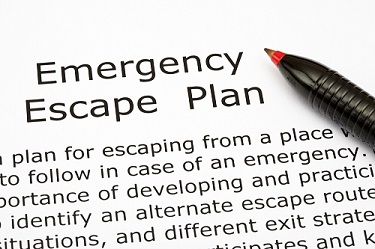War Games – Analysis by Guy Higgins
I don’t often refer back to previous posts, but I just got a comment from a post waaayyyyy back in 2014. That post was about an unannounced war game that President Obama sprang on his G-7 colleagues.

Guy Higgins
Firestorm Principal
Obviously, since I wrote and posted that blog, I thought it was important. Having just re-read it, I still think it’s important. The gist of that blog was the importance of exercising emergency and crisis management plans.
First, there is a difference between practicing emergency response plans and practicing crisis management plans. Emergency response is about life/safety – people first and property second:
- People – save lives and prevent injuries
- Property – minimize physical damage
Emergency response is about a team of people physically onsite at the location of the emergency. These people must be trained in emergency response. They must also be practiced in emergency response. I cannot think of a better example than the crash of United Airlines flight 232 on July 19th 1989 in Sioux City, Iowa. This single emergency captures two examples of the enormous return on investment in practicing emergency response:
- UA 232 was a DC-10 (for those folks who don’t live and breathe airplanes, that is a wide-body, three-engine airliner with the third engine mounted in the base of the vertical stabilizer – the “tail”). That tail-mounted engine failed catastrophically and spewed engine fragments into all three independent airplane hydraulic systems, which then, almost immediately, failed. These multiple hydraulic failures meant that the pilots had no way to control the airplane since all the control surfaces (ailerons for banking and turning, elevator for controlling nose up and down pitch, and rudder for turning) are hydraulically powered. Fortunately, the pilots had practiced loss of flight control, and even more fortunately, one of the passengers was a United Airlines instructor pilot with vast experience in responding to emergencies in highly realistic simulators. This crew was able, using only differential engine thrust (different power on each of the two remaining engines) to turn the airplane and reduced power to descend in a level attitude to bring the airplane into the Sioux City airport and put it on the runway. Please remember, that the pilots had zero conventional control of the airplane. It’s like driving your car when all you have are the accelerator and brakes – no steering wheel (except you don’t have to steer in three dimensions – only two).

- Sioux City had recently conducted a live exercise at the airport, simulating a mass-casualties event. The event included numerous people simulating injuries lying around the airport. Sioux City exercised their emergency fire, medical and police response. The city had also considered how they could take advantage of any National Guard support – good thinking, since the National Guard was available on the day of the crash. Because the FAA knew well before the crash landing (recall, hydraulics failure means no way to lower the massive landing gear in a DC-10) that the airplane was in trouble, they could give Sioux City emergency managers advanced notification. Sioux City was able to notify the local trauma center, which fortunately was during shift change, which gave them two shifts of medical personnel.
There were 296 persons on board UA 232 – 185 of them survived a crash landing that ripped the airplane into pieces. Of the 111 persons who died, the majority died from either blunt trauma incurred during the crash or from fire/smoke inhalation immediately after the crash. No one died because of inadequate emergency response – and 185 people survived because of incredibly professional emergency response by a well-trained and practiced flight crew. Quite frankly, as an aviation professional, my assessment is that a hydraulic failure like that on UA 232 could very easily have resulted in a crash with the loss of all on board. Practice pays off.
Getting back to “war games” or realistic exercises, like planning itself, these pay enormous dividends when something bad happens. Emergencies happen at the speed of one second per second and you don’t have time to think about what to do or look things up. You have to respond – immediately.
What about crisis management? Next time…
 “What should we do now?” “What should we say?”
“What should we do now?” “What should we say?”